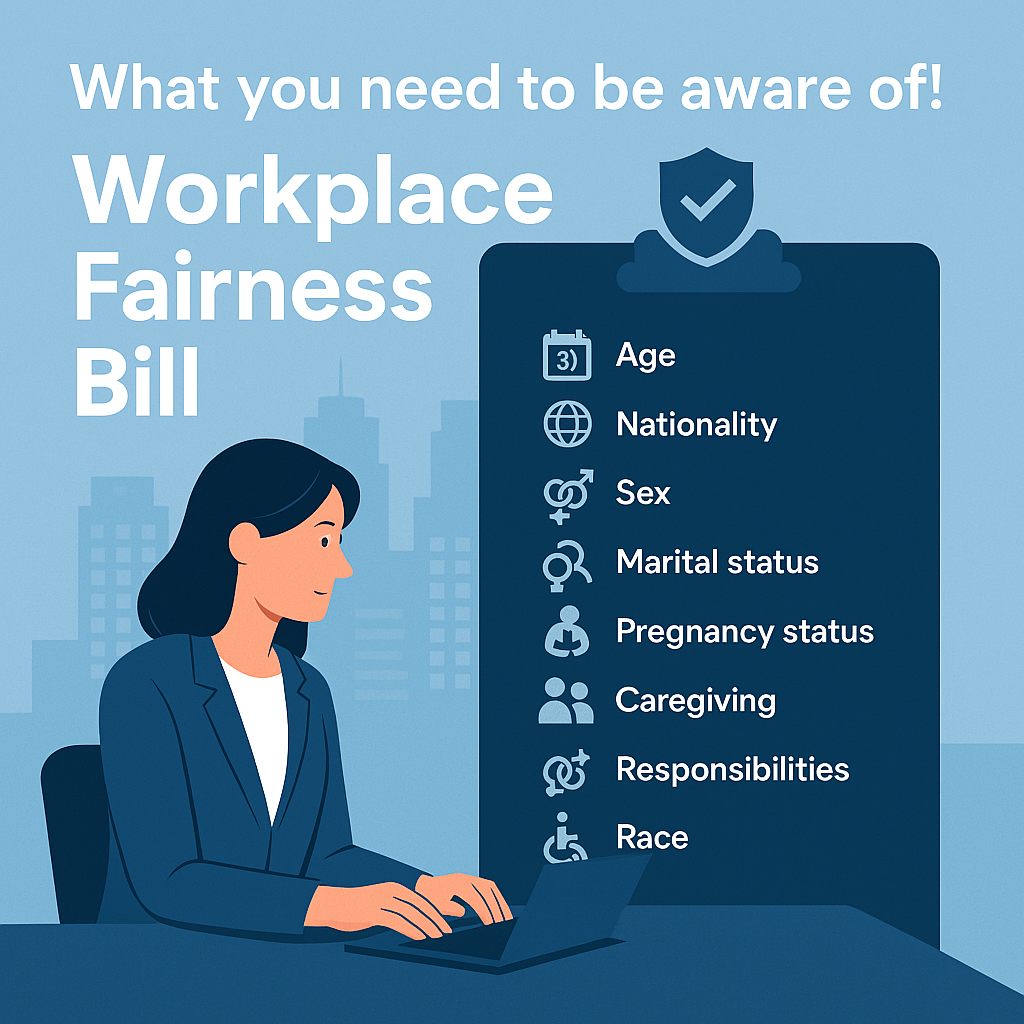1 March 2001 | The Corporate Governance Committee (“CGC”) issued the Code of Corporate Governance (the “Code”) |
May 2004 | The Council on Corporate Disclosure and Governance (“CCDG”) initiated a review of the Code |
14 July 2005 | A revised Code was issued |
22 Nov 2011 | The Corporate Governance Council (“Council”) submitted its recommendations to Monetary Authority of Singapore (“MAS”) after conducting a comprehensive review of the Code |
2 May 2012 | MAS issued a revised Code. The 2012 Code supersedes and replaces the Code that was issued in July 2005 |
The 2012 Code takes effect in respect of Annual Reports relating to financial years commencing from 1 November 2012.
Compliance with the Code is not mandatory but listed companies are required under the Singapore exchange listing Rules to disclose their corporate governance practices and give explanations for deviations from the Code in their annual reports.
Below are the main changes brought about by the 2012 Code.
Principle 1: The Board’s Conduct of Affairs
- Board’s role extended to include the following:
- “Safeguarding of shareholders’ interests and the company’s assets” explicitly stated.
- Identify the key stakeholder groups and recognise that their perceptions affect the company’s reputation.
- Consider sustainability issues, e.g environmental and social factors, as part of its strategic formulation.
- All directors are to discharge their duties and responsibilities at all times as fiduciaries in the interest of the company. Previous Code only requires objective decision making in the interest of the company.
- A clear statement that any delegation of authority in decision making by the Board to any board committee does not abdicate the Board’s responsibilities.
- Preparation of a document with guidelines setting forth clear directions to Management on matters that must be approved by the Board is required.
- Training requirements for directors are now more clearly specified. Incoming directors are now to receive comprehensive and tailored induction on joining the Board. Companies are responsible for arranging and funding the training of directors. The Board is also required to disclose in the company’s Annual Report the induction, orientation and training provided to new and existing directors.
Principle 2: Board Composition and Guidance
- The term “10% shareholders” is introduced. The Board is to be independent from 10% shareholders.
- Board composition with independent directors making up at least half (instead of one-third) of the Board is required under the four scenarios below.
- the Chairman of the Board (the “Chairman”) and the chief executive officer (or equivalent) (the “Ceo”) is the same person;
- the Chairman and the Ceo are immediate family members;
- the Chairman is part of the management team; or
- the Chairman is not an independent director.
- MAS has provided a longer transition period of five years to allow sufficient time for these changes to be made. Accordingly, board composition changes need to be made at the Annual General Meeting (“AGMs”) following the financial years commencing from 1 May 2016 onwards.
- The definition of an “independent” director has been extended to include one who has no relationship with its 10% shareholders.
- The Board should identify in the Annual Report each director it considers to be independent, and determine whether the director is independent in character and judgment and whether there are relationships or circumstances which are likely to affect, or could appear to affect, the director’s judgment.Directors are to disclose to the Board any such relationship as and when it arises.
- Examples of relationships which would deem a director not to be independent has been further clarified and extended to include the following:
- The acceptance of “compensation” by a director or his immediate family member from any of the company’s “subsidiaries” in the previous Code has been amended to “significant compensation” and “related corporations” in the 2012 Code.
- The shareholding threshold of directors or their immediate family members in organisations has been raised from 5% to 10%. Accordingly, directors exceeding the 10% threshold whereby significant payments or material services have been made or received are deemed not independent. In the previous Code, only “for profit business organisations” were considered. In the 2012 Code, all organisations are considered. Material services have also been introduced in the 2012 Code and may include auditing, banking, consulting and legal services.
- A director who is a 10% shareholder or an immediate family member of a 10% shareholder of the company.
- A director who is or has been directly associated with a 10% shareholder of the company, in the current or immediate past financial year.
- The independence of any director who has served on the Board beyond nine years from the date of his first appointment should be subject to particularly rigorous review.
Principle 3: Chairman and Chief executive officer
- The Chairman’s responsibilities have been extended to include:
- The setting of agenda to ensure that adequate time is available for discussion of all agenda items, in particular strategic issues;
- Promote a culture of openness and debate at the Board;
- The appointment of a lead independent director is more strongly worded as a “should” rather than the previous “may” when:
- the Chairman and the Ceo is the same person;
- the Chairman and the Ceo are immediate family members; (c) the Chairman is part of the management team; or
- the Chairman is not an independent director.
- Situation (d) is a new addition, and the responsibility of the lead independent director has been added to lead in periodic meetings with other independent directors without the presence of the other directors, and the lead independent director should provide feedback to the Chairman after such meetings.
Principle 4: Board Membership
- The Nominating Committee (“NC”) responsibilities have been extended to include the following:
- Provide written terms of reference for all board appointments, setting out clearly its authority and duties.
- The lead independent director (if any), to be a member of the NC.
- Review the board succession plans for directors, in particular, the Chairman and the Ceo.
- The development of a process for evaluation of the performance of the Board, its board committees and directors.
- The review of training and professional development programs for the Board.
- New matters to be considered as part of the process for the selection, appointment and re-appointment of directors to include composition and progressive renewal of the Board and each director’s competencies and commitment. (g) In deciding whether a director is able to adequately carry out his duties as a director, the NC is to take into consideration the director’s number of listed company board representations and other principal commitments. Principal commitments include all commitments which involve significant time commitment such as full-time occupation, consultancy work, committee work, non-listed company board representations and directorships and involvement in non-profit organisations.
- The Board is to determine the maximum number of listed company board representatives which any director may hold, and disclose this in the company’s Annual Report.
- Boards should generally avoid approving the appointment of alternate directors, except for limited periods in exceptional case such as when a director has a medical emergency.If an alternate director is appointed, the alternate director should be familiar with the company’s affairs, and be appropriately qualified. Alternate directors bear all the duties and responsibilities of a director.If a person is proposed to be appointed as an alternate director to an independent director, the NC and the Board should review and conclude that the person qualify as an independent director, before his appointment as an alternate director.
- Information to enable shareholders to make informed decisions about directors’ appointment or re-appointment are to accompany the relevant resolution and are to include:
- Any relationships including immediate family relationships between the candidate and the directors, the company or its 10% shareholders;
- A separate list of all current directorships in other listed companies; and (c) Details of other principal commitments.
Principle 5: Board Performance
- The requirement to consider the company’s share price performance over a five-year period vis-à-vis the Singapore Straits Times Index and benchmark index of its industry peers has been removed.
- If an external facilitator has been used in assessing the Board’s performance, the Board is to disclose in the Annual Report whether the external facilitator has any other connection with the company or any of its directors.
Principle 6: Assess To Information
- The Board’s separate and independent access to “Senior Management” has been extended to “Management”.
- Directors are entitled to request from Management and should be provided with such additional information as needed to make informed decisions.
Principle 7: Remuneration Matters
- The Remuneration Committee (“RC”) is to have its own written terms of reference, clearly setting out its authority and duties. The RC should to comprise at least three directors.
- The Board should disclose in the company’s Annual Report the names of the members of the RC and the key terms of reference of the RC, explaining its role and authority delegated to it by the Board.
- The general framework for remuneration and specific remuneration packages now covers “key management personnel”. Previous Code only included the Ceo (or executive of equivalent rank) if the Ceo is not a director. Key management personnel include the Ceo and any other persons having authority and responsibility for planning, directing and controlling the activities of the company.
- Should the RC seek expert advice inside and/or outside the company on remuneration of all directors, the RC should ensure that existing relationships, if any, between the company and its appointed remuneration consultants will not affect the independence and objectivity of the remuneration consultants.
- The company is to disclose the names and firms of the remuneration consultants in the annual remuneration report, and include a statement on whether the remuneration consultants have any such relationships with the company.
- The RC should review the company’s obligations arising in the event of termination of executive directors’ and key management personnel’s contracts of services, to ensure that such contracts of services contain fair and reasonable termination clauses which are not overly generous.
Principle 8: level And Mix of Remuneration
- The principle has been expanded to require alignment between remuneration and the long-term interest and risk policies of the company.
- Companies are encouraged to consider the use of contractual provisions to allow the company to reclaim incentive components of remuneration from executive directors and key management personnel in exceptional circumstances of misstatement of financial results, or of misconduct resulting in financial loss to the company.
Principle 9: Disclosure on Remuneration
- Companies should fully disclose the remuneration of each individual director and the Ceo on a named basis, to the nearest thousand dollars. Previous Code only required disclosures within bands of S$250,000.
- Companies should disclose in aggregate the total remuneration paid to the top five key management personnel (who are not directors or the Ceo).
- Companies should disclose the details of the remuneration of employees who are immediate family members of a director or the Ceo, and whose remuneration exceeds S$50,000 (instead of S$150,000 in the previous Code) during the year. This is to be done on a named basis with clear indication of the employee’s relationship with the relevant director or the Ceo, in applicable bands of S$50,000. Previous Code was on a no-name basis.
- For greater transparency, companies should disclose more information on the link between remuneration paid to the executive directors and key management personnel, and performance. A description of the performance conditions to which entitlement to short-term and long-term incentive schemes are subject, an explanation on why such performance conditions were chosen, and a statement of whether such performance conditions are met is required.
Principle 10: Accountability
- The Board should take adequate steps to ensure compliance with legislative and regulatory requirements, including requirements under the listing rules of the securities exchange, for instance, by establishing written policies where appropriate.
Principle 11: Risk Management And Internal Controls
- Principle on risk management is introduced, whereby the Board is responsible for the governance of risk, should ensure that Management maintains a sound system of risk management, and should determine the nature and extent of the significant risks which the Board is willing to take in achieving its strategic objectives.
- The Board should determine the company’s levels of risk tolerance and risk policies, and oversee Management in the design, implementation and monitoring of the risk management and internal control systems.
- The Board is to perform an annual review of the adequacy and effectiveness of the company’s risk management and internal control systems, including financial, operational, compliance and information technology controls. Previous Code required the Audit Committee (“AC”) to perform this annual review and did not require a review of information technology controls.
- There is a new requirement for the Board to comment in the company’s Annual Report:
- The adequacy and effectiveness of information technology control system.
- Whether it has received assurance from the Ceo and the CFo:
- that the financial records have been properly maintained and the financial statements give a true and fair view of the company’s operations and finances; and
- regarding the effectiveness of the company’s risk management and internal control systems.
Principle 12: Audit Committee
- The AC Chairman and at least one member of the AC is to have recent and relevant accounting or related financial management expertise or experience. The previous Code does not specify that the AC Chairman needs to have such expertise.
- The duties of the AC includes reviewing and reporting to the Board the adequacy and effectiveness of information technology controls.
- The AC should state the aggregate amount of fees paid to the external auditors for that financial year and a breakdown of the fees paid in total for audit and non audit services in the company’s Annual Report. Where the external auditors also supply a substantial volume of non-audit services to the company, the AC should keep the nature and extent of such services under review, seeking to maintain objectivity.
- The existence of a whistle-blowing policy should be disclosed in the company’s Annual Report, and procedures for raising such concerns should be publicly disclosed as appropriate.
- The Board should disclose in the company’s Annual Report measures taken by the AC members to keep abreast of changes to accounting standards and issues which have a direct impact on financial statements.
- A former partner or director of the company’s existing auditing firm or auditing corporation should not act as a member of the company’s AC:
- within 12 months commencing on the date of his ceasing to be a partner of the auditing firm or director of the auditing corporation.
- for as long as he has any financial interest in the auditing firm or auditing corporation.
Principle 13: Internal Audit
- The AC is to approve the hiring, removal, evaluation and compensation of the head of the internal audit function, or the accounting/auditing firm or corporation to which the internal audit function is outsourced.
- The Internal Auditor should have unfettered access to all the company’s documents, records, properties and personnel, including access to the AC.
Principle 14: Shareholder Rights
- This is a new principle and states that companies should treat all shareholders fairly and equitably, and should recognise, protect and facilitate the exercise of shareholders’ rights, and continually review and update such governance arrangements.
- Companies should:
- Facilitate the exercise of ownership rights by all shareholders.
- ensure that shareholders have the opportunity to participate effectively in and vote in general meetings of shareholders.
- Allow corporations which provide nominee or custodial services to appoint more than two proxies.
Principle 15: Communication With Shareholders
- Companies should devise an effective investor relations policy to regularly convey pertinent information to shareholders.
- The Board should state in the company’s Annual Report the steps taken to solicit and understand the views of the shareholders.
- Companies are encouraged to have a policy of payment of dividends and should communicate it to shareholders. Where dividends are not paid, companies should disclose their reasons.
Principle 16: Conduct of Shareholder Meetings
- This is a new principle and states that companies should encourage greater shareholder participation at general meetings of shareholders, and allow shareholders the opportunity to communicate their views on various matters affecting the company.
- Companies should make the appropriate provisions in the Articles of Association to allow for absentia voting at general meetings of shareholders.
- There should be separate resolutions at general meetings for each substantially separate issue. “Bundling” resolutions should be avoided unless they are interdependent and linked so as to form one significant proposal.
- All directors, in particular the Chairman of the Board and the respective Chairman of the AC, NC and RC are to attend general meetings of shareholders.
- external auditors should be present to address shareholders’ queries about the conduct of audit and the preparation and content of the auditor’s report.
- Minutes of general meetings are to be made available to shareholders upon their request.
- All resolutions should be put to vote by poll and an announcement of the detail results (showing the number of votes cast for and against each resolution and the respective percentages) made.
- Companies are encouraged to employ electronic polling.
Related Posts
🎅🎄 Merry Christmas! 🎄🎅
Wishing you all the joy, peace, and love this festive season brings. ✨ #Christmas #paulwanco…
✨ Happy Deepavali! ✨
Wishing you and your loved ones a joyous and prosperous festival of lights! May this…
Paul Wan & Co Group Bonding Event Da Nang 2024
Paul Wan & Co group celebrated our 38th anniversary with a big bang retreat in…
🌕✨ Happy Mid-Autumn Festival ! 🎑🐇
As the full moon shines bright, we send our warmest wishes to our valued clients,…












